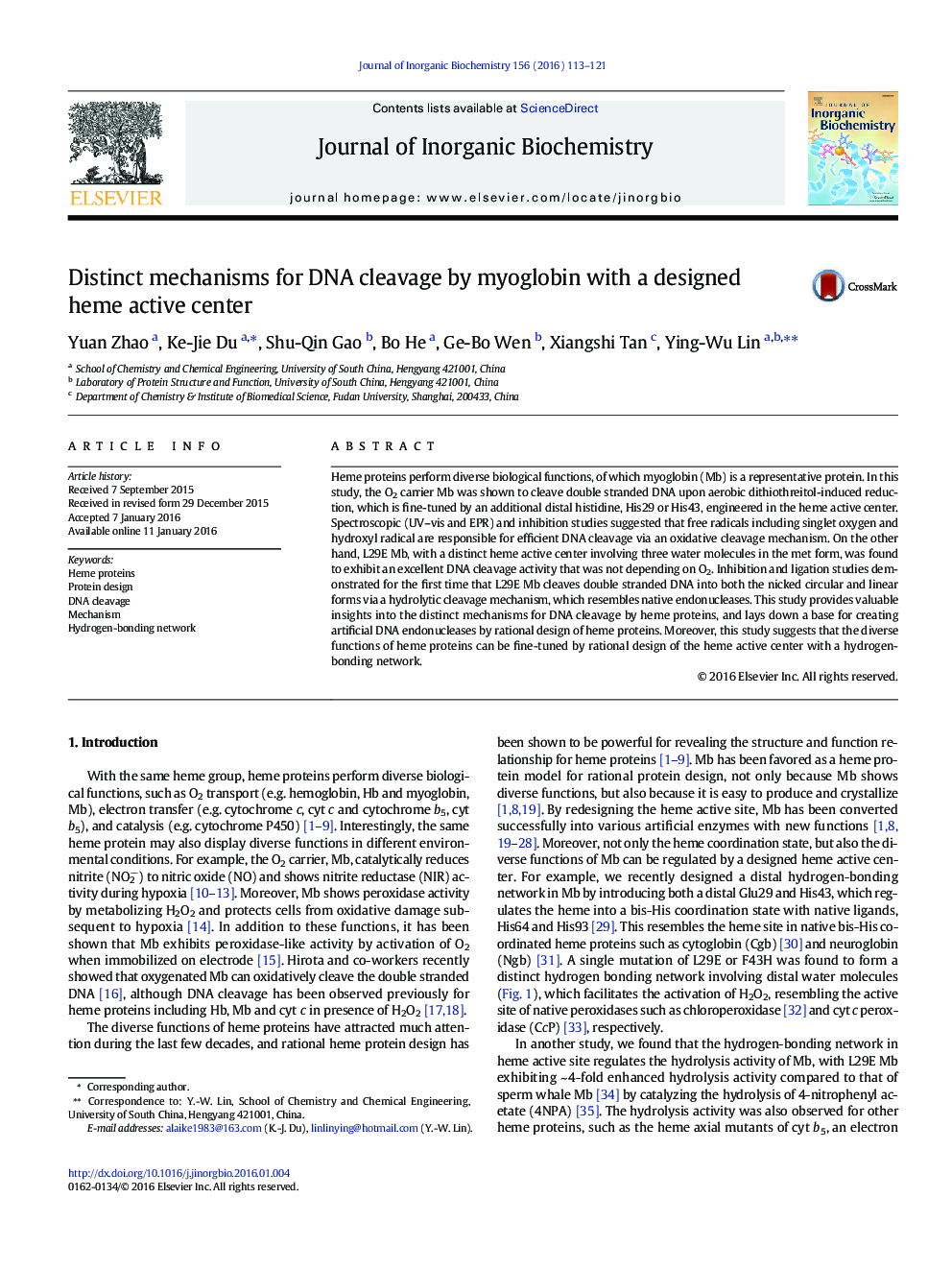| Article ID | Journal | Published Year | Pages | File Type |
|---|---|---|---|---|
| 1316431 | Journal of Inorganic Biochemistry | 2016 | 9 Pages |
•Myoglobin (Mb) oxidatively cleaves DNA upon aerobic dithiothreitol-induced reduction.•Heme distal His29 or His43 fine-tunes the DNA cleavage activity of Mb.•L29E Mb was shown for the first time to cleave DNA via a hydrolytic cleavage mechanism.•Two distinct mechanisms for DNA cleavage were proposed for Mb and its mutants.•This study lays down a base for creating artificial DNA endonucleases using heme proteins.
Heme proteins perform diverse biological functions, of which myoglobin (Mb) is a representative protein. In this study, the O2 carrier Mb was shown to cleave double stranded DNA upon aerobic dithiothreitol-induced reduction, which is fine-tuned by an additional distal histidine, His29 or His43, engineered in the heme active center. Spectroscopic (UV–vis and EPR) and inhibition studies suggested that free radicals including singlet oxygen and hydroxyl radical are responsible for efficient DNA cleavage via an oxidative cleavage mechanism. On the other hand, L29E Mb, with a distinct heme active center involving three water molecules in the met form, was found to exhibit an excellent DNA cleavage activity that was not depending on O2. Inhibition and ligation studies demonstrated for the first time that L29E Mb cleaves double stranded DNA into both the nicked circular and linear forms via a hydrolytic cleavage mechanism, which resembles native endonucleases. This study provides valuable insights into the distinct mechanisms for DNA cleavage by heme proteins, and lays down a base for creating artificial DNA endonucleases by rational design of heme proteins. Moreover, this study suggests that the diverse functions of heme proteins can be fine-tuned by rational design of the heme active center with a hydrogen-bonding network.
Graphical abstractThe distal histidine mutant of myoglobin (Mb), F43H Mb, was shown to oxidatively cleave double stranded DNA upon dithiothreitol-induced reduction in presence of O2, whereas the distal glutamate mutant, L29E Mb in the met form, was demonstrated for the first time to cleave the DNA via a hydrolytic mechanism.Figure optionsDownload full-size imageDownload as PowerPoint slide
